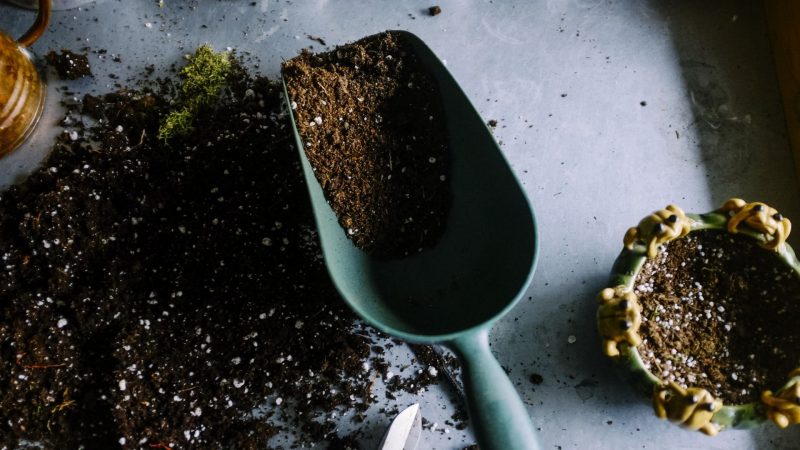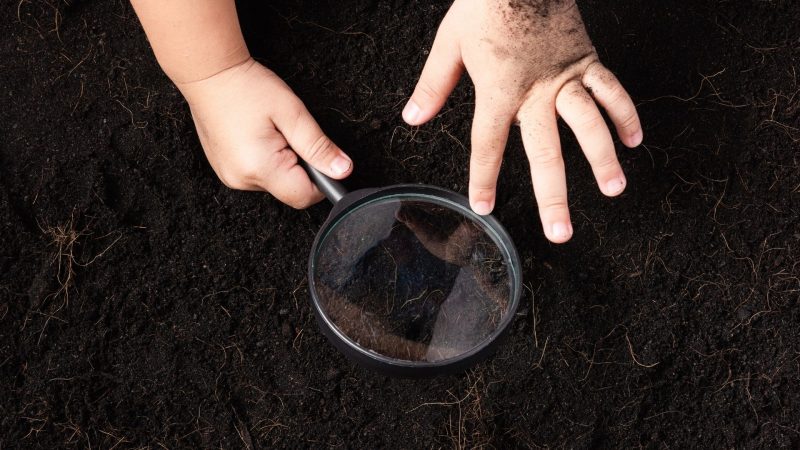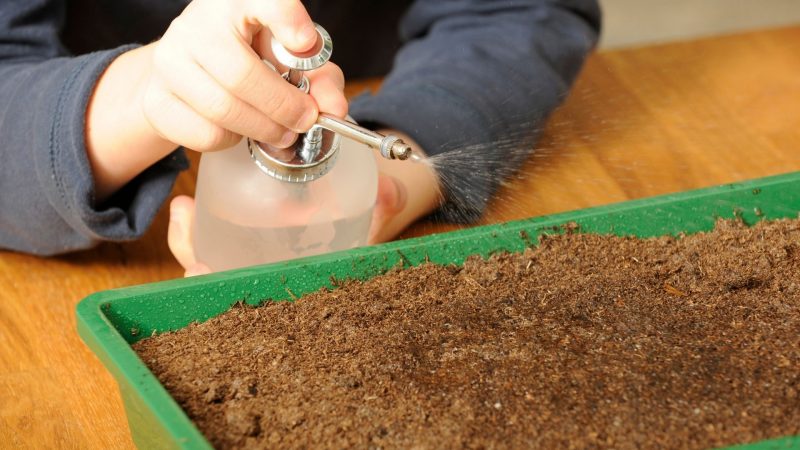Soil mites are foragers living in your potted plants or compost heaps. They’re known to carry bacteria-causing diseases, so it’s essential to get rid of them.
But, how do you get rid of soil mites naturally? To get rid of soil mites naturally, you have to remove the soil from the pot and remove any rotting plant materials that serve as food for soil mites. Put new soil into the pot and spray plants with natural solutions such as cinnamon mixture and garlic-based solution.
These mites are either brown or white. So, if you see dot-sized white or brown creatures moving in your soil, chances are you have mites in your soil. To dig deeper into soil mites, kindly proceed below.
What Are Soil Mites?

Soil mites are scavengers that live in your potted plants or your garden’s soil. Although they’re not harmful to your soil or plants, they can carry disease-causing bacteria that can get transmitted to humans, such as parasites’ eggs like a tapeworm.
So, if you don’t want to gamble your health, you might want to consider getting rid of these mites.
Do Soil Mites Bite?
Soil mites are not known to bite on humans. The only mites known to bite humans are scabies and hair follicle mites.
What Soil Mites Eat?
Soil mites eat algae, dead plants, tiny live worms, fungi, and tiny dead insects.
How Do You Know if the Soil Has Mites?

Knowing that you have mites in your soil can be difficult. First, they’re almost impossible to see by the naked eye, and second, their color matches the earth or other plant material.
Thus, you might need to look for them closely or use a magnifying glass. You’ll know that you have mites in your soil once you start seeing the dot-sized brown or white creatures moving around.
How to Know What Kind of Soil Mites You Have?

Since these mites are very microscopic, you might need to take a closer look at them in your potted plants or garden’s soil. If you see white or brown-colored creatures that are dot-sized, then they’re probably the soil mites you’re looking for.
There are several types of soil mites, but the following are the most common:
Mesostigmata
The mesostigmatid mites are not as common as the Oribatei. They belong to an order called “parasitiformes.“
Parasitiformes is an order of arachnids to which the mites belong. However, the mesostigmatid mites aren’t like most of the parasitic members of this group.
They feed on dead or decomposing organic matter and the following:
- Fungi
- Litter
- Pollen
- Nectar
- Dung
- Rotting wood
- Beach wrack
They’re not parasitic but free-living and predatory. Mesostigmata can be identified by the pair of spiracles located alongside their body.
Oribatei
Among the four common soil mites, the Oribatei species is the most common. They’re also called turtle mites due to their large shell-like body, similar to the turtle’s shell.
The Oribatid mites don’t grow more than a millimeter, so they’re not easy to see with the naked eye. You might need to use a microscope to see them.
Part of their diet is the following:
- Dead plants
- Tiny live worms
- Little dead insects
- Algae
- Fungi
Astigmata
The astigmatid mites are free-living like the mesostigmatid mites. They prefer moist environments with high organic matter, which is why they’re typically found in farm soils.
They multiply significantly, particularly after rich manure application. These mites have lightly selectorized bodies with third and fourth pairs of legs tending to exit behind the first and second pairs of legs.
Few astigmatid mites are free-living and feed mainly on organic matter. On the other hand, some astigmata are feather mites, which live in birds’ feathers.
Prostigmata
The pro stigmata is a suborder of trombidiformes, comprising the ‘true mites’ sucking members. The prostigmatid mites are known pests to plants, and most are predators rather than scavengers.
These mite species feed on microbes, plants, and parasites. They’re also very opportunistic and can multiply rapidly in just a short amount of time.
Should You Get Rid of Soil Mites?
It would be best if you get rid of soil mites.
Although they’re said to be harmless on plants in general, there are species of soil mites that can actually be a nuisance to your plants, like the prostigmatid mites. Apart from this, soil mites are also linked to carrying bacteria causing diseases, resulting in bacterial infection.
Thus, it’s best to get rid of them as their risks outweigh their decomposition benefits.
Are Soil Mites Harmful to Humans?

Soil mites are potentially harmful since they’re bacteria carriers that transmit rickettsialpox and scrub typhus to humans. They carry parasites’ eggs, like tapeworms, which are likely to get transferred to humans.
Are Soil Mites Harmful to Plants?

In general, soil mites aren’t harmful to plants. In fact, they’re highly beneficial as they help in the decomposition process.
However, soil mite species like the prostigmata feed on plants, causing your shrubs to die slowly.
How to Naturally Get Rid of Soil Mites?
Consider following the steps below to get rid of soil mites naturally.
Step 1: Remove and Filter the Soil
The first step you need to do is remove the soil from the pot or container. Take out any dead or decaying plant material from these mites they’re feeding on.
In taking out the dirt, make sure to be extra careful not to ruin the plant’s roots. After removing the soil, sift it to ensure no decaying materials are left for mite consumption.
However, if it’s garden soil, you might need to scoop a few inches of the topsoil to ensure the root system will not get damaged. In this case, you don’t need to take out the soil, but you still need to sift and remove the dead leaves and other decaying matter.
Step 2: Repot Your Plants
After filtering the soil, repot your plants. If you have some new earth in your vicinity, you may use that.
However, if you don’t have new soil, you can use the dirt you’ve sifted and put it back in your plant’s pot or container. For garden soil, return the loam to its place and make sure your plants are substantially covered.
Step 3: Spray the Soil
After the first and second step is done, you’ll need to spray the soil with an organic solution like cinnamon mixture or dish soap and starch. This is to prevent the mites from coming back to your loam and infesting once again.
How to Kill Mites in Soil?

One of the natural ways to kill mites in the soil is by spraying a mixture of dishwashing soap and starch. Mix three drops of dishwash soap and three to four tablespoons of starch in five cups of water.
After that, spatter the mixture on the soil to eliminate the mites. Make sure to wash off the parts of the plants that got sprayed by the solution after.
How to Kill Soil Mites in Pot Plants?
To kill the mites in the pot plants, you can also use the dishwasher soap and starch mixture and spray it on the soil of your potted plants. Furthermore, you can also use the cinnamon solution.
If you want to opt for the cinnamon solution, add one teaspoon of cinnamon to four cups of water and let it settle. After that, pour it into the soil to exterminate the soil mites and other bugs.
Is Repotting Plants With Fresh Soil Eliminate Soil Mites?
Repotting plants with fresh soil doesn’t entirely eliminate soil mites. However, this gives you an upper hand as this removes their eggs.
Homemade Spray for Soil and Plants to Get Rid of Soil Mites
Cinnamon Mixture
One of the best homemade sprays you can use to get rid of soil mites is the cinnamon mixture. Below are the steps in making one:
Step 1: You can make this by mixing a tablespoon of cinnamon in four cups of water.
Step 2: Let the cinnamon settle on the bottom of the container you’re using.
Step 3: Pour the mixture into the soil to eliminate the soil bugs.
Dish Wash Soap and Starch Mixture
Another homemade spray for the soil you can use is the cinnamon and starch mixture. Follow these simple steps:
Step 1: You have to mix three drops of dishwash soap with three to four tablespoons of starch in five cups of water to make this.
Step 2: Spray it on the soil to solve your mite problems.
Step 3: Rinse off the plant’s parts that get sprayed with the solution.
Garlic-Based Solutions
You can also use a garlic-based solution to resolve your mite dilemma. To do this, follow the steps below:
Step 1: Warm a gallon of water in a pot until it starts to steam, then add four garlic cloves for 20 minutes.
Step 2: Remove the garlic from the water and let it cool.
Step 3: Fill the spray bottle with the solution and shake it lightly before using it.
Related: Diatomaceous Earth Uses as a Natural Pesticide | Tips and Guide
List of Sources
Arce, S. I., et al. (2020). Mesostigmatid Mites (Acari: Mesostigmata) At the Domestic-Wildlife Interface: Poultry and Passerine Birds of Central Argentina. National Center for Biotechnology Information – National Library of Medicine.
Nicholson, W. L., Paddock, C. D. (2019). Rickettsial Diseases (Including Spotted Fever & Typhus Fever Rickettsioses, Scrub Typhus, Anaplasmosis, and Ehrlichioses). Centers for Disease Control and Prevention.
Mites Affecting Humans. Illinois Department of Public Health.
- Bed Bug Surge 2025: How to Detect, Prevent, and Safely Eliminate Infestations in Top U.S. Cities - June 18, 2025
- Asian Needle Ants Invade US Homes: 2025 Guide to Identification, Risks, and Effective Control - June 11, 2025
- New World Screwworm Alert: How US Livestock Owners Can Prevent Outbreaks and Protect Herds [Summer 2025 Update] - June 8, 2025
